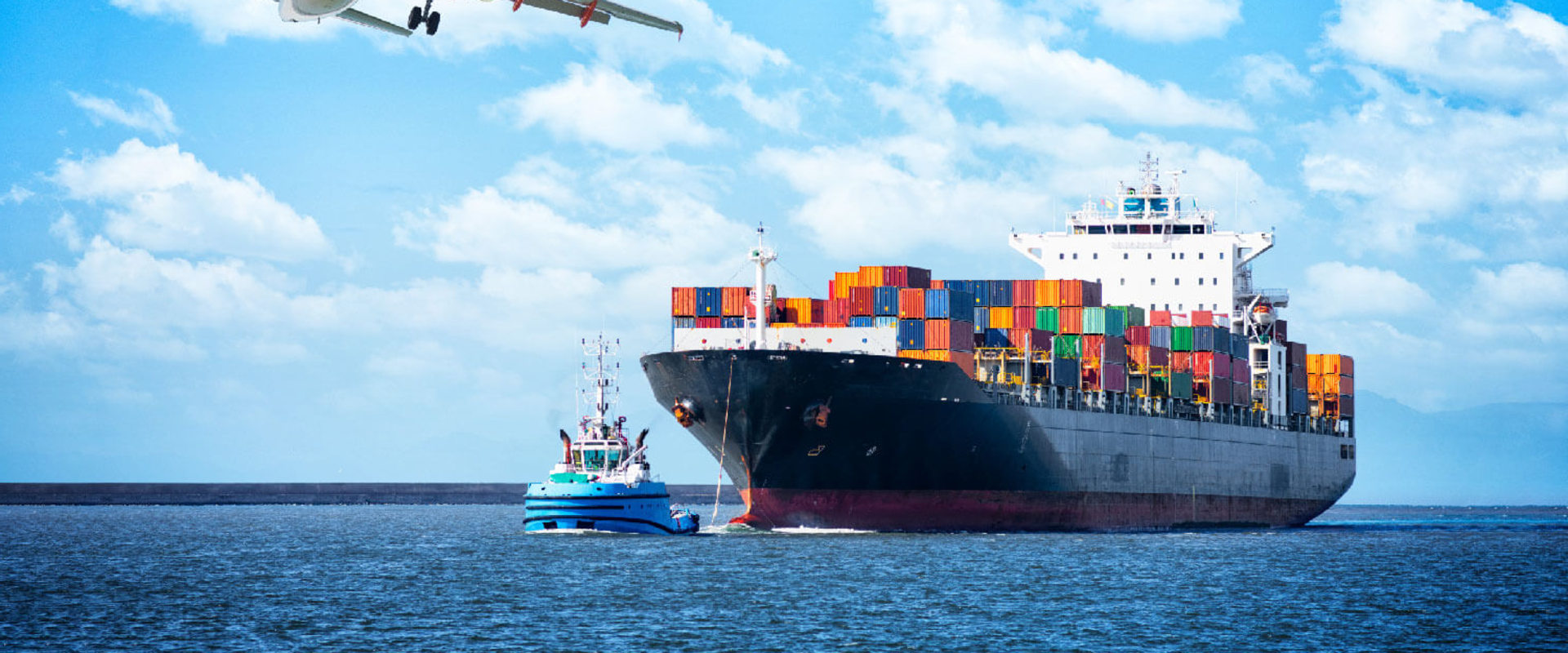Welcome to our comprehensive guide on ocean freight! If you're looking to understand the ins and outs of shipping and logistics, particularly in regards to shipping methods and costs, then you've come to the right place. In this article, we'll dive deep into the world of ocean freight and provide you with all the information you need to know. Whether you're a business owner looking to ship products overseas or simply someone interested in learning about the process, we've got you covered. So let's get started and explore the world of ocean freight together. Welcome to the world of ocean freight! In this article, we will take a comprehensive look at this essential component of shipping and logistics.
Ocean freight, simply put, is the transportation of goods by sea. It has been used for centuries and is still one of the most popular ways to transport goods across the globe. But what exactly is the history of ocean freight? How important is it in international trade? And how does it compare to other shipping methods? Let's dive in and find out.One of the earliest recorded instances of ocean freight dates back to ancient Egypt, where goods were transported along the Nile River and the Mediterranean Sea. As maritime trade grew, so did the development of ships and navigation techniques.
The advent of steamships in the 19th century revolutionized ocean freight, making it faster and more efficient than ever before. Today, containerization and advanced technology have further improved the process, making ocean freight an indispensable part of global trade.But why is ocean freight so important? For starters, it is significantly cheaper than air freight, making it a preferred choice for bulk shipments. It also has a larger capacity, allowing for the transportation of larger and heavier goods. And with over 90% of global trade being carried out through the sea, it's safe to say that ocean freight plays a crucial role in keeping the global economy moving.When comparing ocean freight to other shipping methods such as air and rail, it is clear that each has its own advantages and disadvantages.
While air freight may be faster, it is also more expensive. Rail transport may be more cost-effective for landlocked countries, but it is limited in terms of access to ports and destinations. Ocean freight strikes a balance between cost and time, making it a popular choice for businesses worldwide.Now let's take a closer look at the types of cargo that can be transported via ocean freight. The most common method is container shipping, which involves loading goods into standardized containers that can be easily transferred between ships, trucks, and trains.
This allows for easier tracking and handling of goods, as well as faster turnaround times at ports. Bulk shipping, on the other hand, is used for large quantities of unpackaged goods such as oil, grain, and coal. And break-bulk shipping is used for oversized or irregularly shaped cargo that cannot fit into containers.One of the main factors to consider when choosing an ocean freight provider is the cost. In addition to the actual shipping costs, there are several other charges that businesses need to be aware of.
These include fuel surcharges, which can fluctuate depending on market prices, port fees, and insurance costs. It's important to work with a reputable and transparent freight forwarder who can provide a detailed breakdown of all these costs upfront.Aside from costs, there are other important considerations when choosing an ocean freight provider. Transit times are crucial for businesses that have time-sensitive shipments. Reliability is also key, as delays in delivery can result in lost revenue and damaged relationships with customers.
And of course, good customer service is essential for a smooth shipping experience.To give you a better understanding of how ocean freight works in practice, let's take a look at some real-life examples. One company, XYZ Corporation, successfully reduced their shipping costs by 30% by switching from air to ocean freight for their international shipments. Another example is ABC Company, who utilized container shipping to transport their goods from China to the United States, resulting in significant cost savings and improved efficiency. These case studies showcase the benefits of ocean freight and how it can positively impact businesses of all sizes.In conclusion, ocean freight is a vital part of the global supply chain and plays a crucial role in international trade.
It has a rich history and continues to evolve with advancements in technology and shipping practices. From understanding its importance to exploring its various methods and costs, we hope this article has provided you with a comprehensive look at ocean freight. So the next time you see a cargo ship sailing across the ocean, you'll have a better appreciation for the journey it is making and the role of ocean freight in keeping the world connected and moving forward.
Ocean Freight vs. Other Shipping Methods
Understanding the DifferencesWhen it comes to shipping goods, there are several methods available, each with its own advantages and disadvantages.One of the most common methods is ocean freight, which involves transporting goods by sea using large cargo ships. Ocean freight is often compared to other shipping methods such as air freight, rail freight, and trucking. While all of these methods serve the same purpose of transporting goods, there are significant differences between them that are important to understand.
Ocean Freight vs. Air Freight
The main difference between ocean freight and air freight is the speed of delivery. Air freight is much faster, making it a more suitable option for time-sensitive or perishable goods.However, this speed comes at a higher cost, making air freight less economical for larger or heavier shipments.
Ocean Freight vs. Rail Freight
Rail freight is another commonly used shipping method, especially for landlocked countries or regions with efficient rail networks. Compared to ocean freight, rail freight can offer faster delivery times and lower costs for shipments within a certain distance. However, it is limited by the availability of rail lines and may not be a viable option for international shipments.Ocean Freight vs.TruckingTrucking is often used for domestic or regional shipments due to its flexibility and ability to reach destinations that may not be accessible by other methods. However, it is generally more expensive than ocean freight, especially for long-distance or international shipments. Overall, the choice between ocean freight and other shipping methods will depend on various factors such as the nature of the goods, delivery time requirements, and budget constraints. By understanding the differences between these methods, you can make an informed decision on which option is best for your shipping needs. In conclusion, ocean freight plays a crucial role in the world of shipping and logistics. Its long history and continued use prove that it is a reliable and cost-effective method for transporting goods across the globe.
By understanding the basics, various methods and costs, and important considerations when choosing a provider, you can make informed decisions for your business's shipping needs. Whether you are a small startup or a large corporation, ocean freight can be a valuable tool in getting your goods where they need to go.



